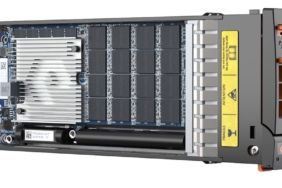[ad_1]

Automation has been a cornerstone of business innovation for centuries, evolving from early mechanisms like the water wheel and windmill to the revolutionary impacts of the steam engine and electricity. However, the automation process was never developed to be hands-off, e.g., leave it running and walk away. Monitoring, management, and upgrades continue to be a part of the process, including Artificial Intelligence (AI). As with all automation throughout history, AI has aimed to improve efficiency, productivity, and convenience, but it still takes a human partnership to ensure stability.
CTO and Co-Founder of Reveille Software.
Robotic Process (Automation?)
Robotic Process Automation (RPA) has entered today’s business world to perform routine and mundane tasks. It serves the same purpose that automation permanently has—to save time and resources while increasing accuracy and productivity. In the case of RPA, it performs the routine tasks needed to have access to the Intranet, Enterprise Resource Planning (ERP), Customer Relationship Management (CRM), Accounts Paid/Payable (A/P), and Human Resource (HR) applications.
RPA now governs invoice, payroll, and claims processing. These tasks include extracting information from digital content stored in document repositories or during content capture processing. The goal is process efficiency, better data accuracy, and a lower cost point.
However, users are not required to possess low-level programming or coding skills to leverage RPA. This lack of coding knowledge doesn’t mean it’s a hands-free operation—oversight and upgrades are necessary. With this in mind, we’ll examine the management, operational, and governance gaps an organization can have when running a digital workforce.
Map the gaps
For RPA to be used effectively and appropriately, a comprehensive framework for managing the RPA platform is needed. This management includes knowing the roles, responsibilities, and other processes associated with RPA operation. For proper RPA functioning, it is necessary to close what is referred to as “platform management gaps” for actively governing change, incident management, and Service Level Agreements (SLAs). For these reasons, it’s necessary to ensure management provides insights into:
Performance metrics: Performance metrics include robot utilization, throughput, cycle time, error rates, and cost savings.
Robot target applications: Service level information for the applications the robots are automating, such as application availability, performance, and service levels.
Operational insight: Visibility into how the RPA platform operates, such as RPA platform uptime, RPA database health, and system error rates.
IT professionals want to complete tasks without guesswork. For that reason, insight is critical for effectively managing and optimizing the RPA program’s performance and effectiveness. The set of rules, processes, and controls established to manage and oversee the implementation, operation, and maintenance of RPA is what is meant by “governance and oversight.”
Governance and oversight cover RPA scalability, or the ability of RPA to handle an increasing number of processes, transactions, and users. Before scaling RPA operations, IT individuals must apply careful thought to the infrastructure, resources, capacity, and more. Here is the essential checklist to follow before an expansion is underway:
- Is RPA scalability hindered by supporting RPA infrastructure?
- Is RPA scalability hindered by how your RPA platforms are currently managed?
- Are some RPA automated processes at a complexity level requiring additional resources?
- Is your RPA integrated with capacity-limited legacy systems?
- How will you know who has changed or updated the RPA environment?
It’s important to note that data privacy, security, and compliance risks will all increase as the RPA program grows. Ensure you know who has administrator-level control to manage and change the RPA configuration and access.
While RPA platforms can deliver a positive impact, they take time to adapt to changes in the target applications. Updates, new versions, or replaced applications critical to robotic processes can cause operation failures and incorrect data. Error management of RPA automation is usually a challenge at scale. Therefore, an effective governance and oversight framework for RPA programs is crucial.
As the RPA program grows, software tools will help close those possible gaps in RPA platform management and governance. Third-party tools provide the insight, control, and oversight needed to mitigate risk and ensure the highest ROI from the RPA investment. Some of these added tools provide agentless management capabilities to help ensure the continued health and productivity of RPA platforms. These capabilities ultimately give organizations a comprehensive framework to actively manage roles, responsibilities, and processes associated with RPA. In addition, they also offer the ability to manage robots at scale, know performance, and have automated notifications when issues occur.
Know your baseline stats
Regarding RPA, benchmarking evaluates and compares an organization’s system’s performance, efficiency, and effectiveness against established standards, best practices, or competitors. It leads to informed decisions before adding capacity for upgrades, new implementations, and migrations. To establish a practical and helpful benchmark, it is crucial to have access to RPA metrics such as:
- User levels
- Capture processing levels
- Repository activity
- Transaction performance levels
- Database activity
- Application server activity
- Workflow processing volumes
- Transformation processing volumes
- ECM platform service levels
- RPA platform service levels
- Application integration service levels
IT applications constantly change. As an organization grows and evolves, evaluating the service levels, performance, and baselines of RPA systems becomes essential.
Conclusion
There is no doubt that RPA will benefit your organization in the same fundamental way that the water wheel increases the efficiency of grinding grain. However, in the RPA case, organizations can’t just plug it in and let it go—even though “automation” is part of the name. Users must close any possible management, operational, and governance gaps with added software tools, knowing roles and responsibilities, and benchmarking. This process will ensure you receive the best ROI as the system functions and grows. Rule-of-thumb takeaway: You can automate, but you still have to participate.
We’ve featured the best IT infrastructure management service.
This article was produced as part of TechRadarPro’s Expert Insights channel where we feature the best and brightest minds in the technology industry today. The views expressed here are those of the author and are not necessarily those of TechRadarPro or Future plc. If you are interested in contributing find out more here: https://www.techradar.com/news/submit-your-story-to-techradar-pro
[ad_2]
Source link








